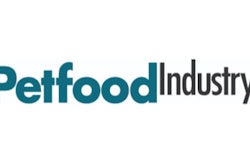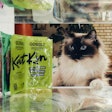
Freeze-dried ingredients allow pet food brands to offer raw meat products without the need for refrigeration. For nearly a decade, Petfood Industry has reported on the steadily growing popularity of freeze-dried dog, cat and other pet foods. Yet in all that time, few scientists have examined the digestibility of freeze-dried pet foods. Researchers at the University of Illinois at Urbana-Champaign in the United States and the University of Guelph in Canada collaborated to examine how well dogs can digest the amino acids in freeze-dried products. Amino acids are the building blocks of proteins.
The researchers tested three formats of freeze-dried dog foods: traditional freeze-dried nuggets, low-temperature freeze-dried nuggets and a hybrid freeze-dried nugget. Primal Pet Foods provided the dog foods. The scientists used the precision-fed cecectomized rooster assay to test amino acid digestibility. The assay involves a surgical procedure, similar to a human appendectomy, that turns roosters into an effective, efficient model for dogs’ and cats’ digestive systems.
Freeze-dried dog food experiment
In the experiment, twelve cecectomized roosters ate one of the three freeze-dried dog food formats along with corn. The scientists analyzed the birds’ urine and feces to determine how well they had digested the amino acids in the dog food.
“There were no significant differences in standardized amino acid digestibilities among diets, with digestibilities being high for all tested,” wrote the researchers in the Journal of Animal Science.
Considering those amino acids that dogs’ bodies can’t synthesize, digestibilities exceeded 90% for all diets (arginine: 94.1%-95.6%; isoleucine: 91.2%-93.1%; leucine: 92.4%-95.3%; methionine: 92.8%-94.9%; phenylalanine: 90.8%-93.6%; tryptophan: 96.2%-98.6%; valine: 90.2%-92.9%).
However, histidine, lysine, and threonine were lower with digestibilities ranging from 81.7%-86.6%, 86.7%-91.7%, and 89.6%-91.7%, respectively.
The freeze-dried dog foods also showed little evidence of heat damage from processing. The scientists determined this by measuring the ratio of types of lysine in the nuggets.
“In general, the low-temperature nugget had the greatest numerical AA digestibilities, likely due to reduced heat damage, but all diets performed very well,” the scientists wrote.













